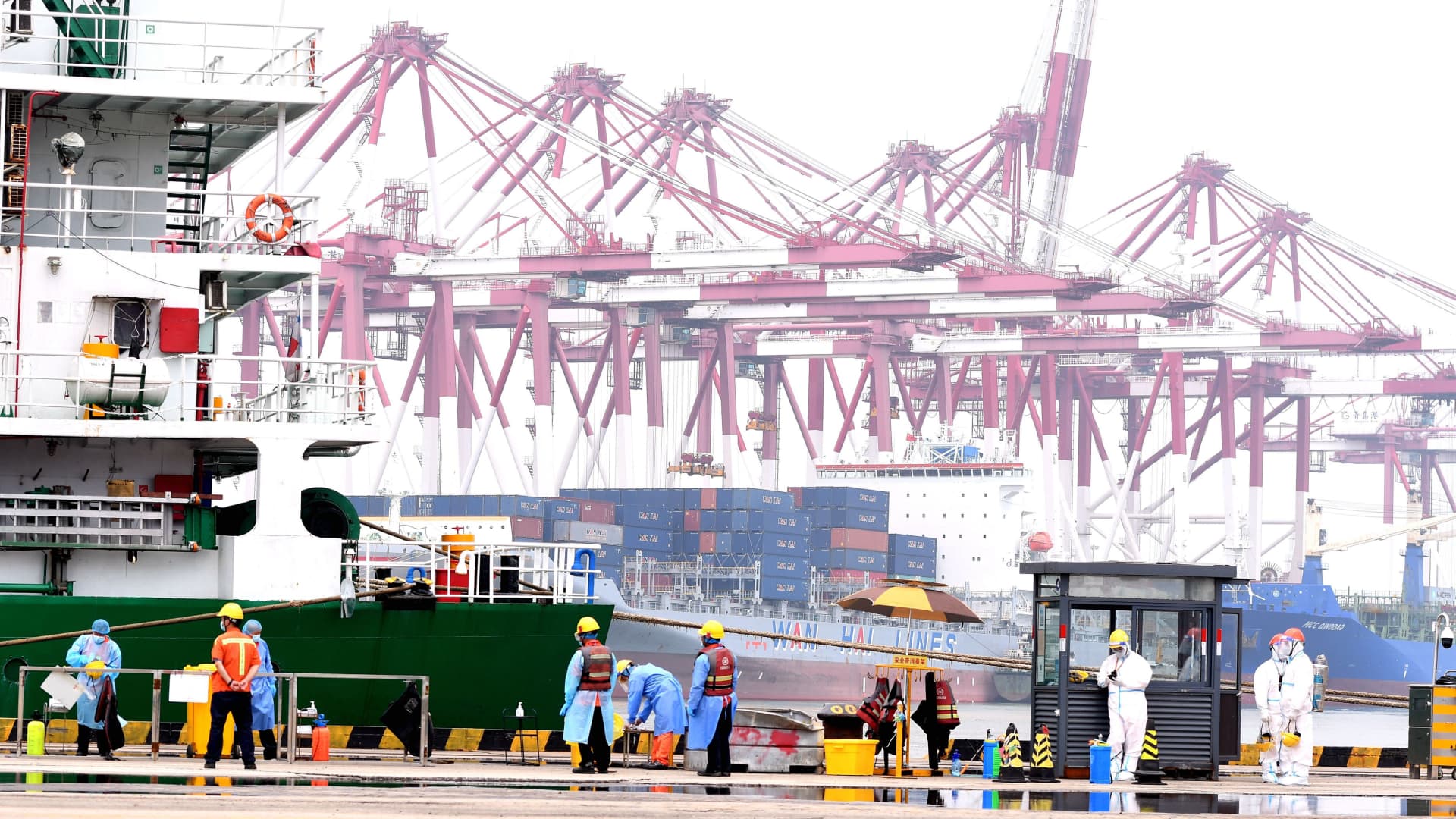
BEIJING — China eked out GDP growth of 0.4% in the second quarter from a year ago, missing expectations as the economy struggled to shake off the impact of Covid controls.
Analysts polled by Reuters had forecast growth of 1% in the second quarter.
Industrial production in June also missed expectations, rising by 3.9% from a year ago, versus the 4.1% forecast.
However, retail sales in June rose by 3.1%, recovering from a prior slump and beating expectations for no growth from the prior year. Major e-commerce companies held a promotional shopping festival in the middle of last month.
Retail sales in June saw a boost from spending across many categories including autos, cosmetics and medicine. But catering, furniture and construction materials saw a decline. Within retail sales, online sales of physical goods grew by 8.3% from a year ago in June, slower than the 14% growth the prior month.
Fixed asset investment for the first half of the year came in above expectations, up 6.1% versus 6% predicted.
Overall fixed asset investment picked up on a monthly basis, rising by 0.95% in June from May to an undisclosed figure. While investment in infrastructure and manufacturing maintained a similar or better pace of growth from May to June, that in real estate worsened. Investment in real estate in the first half of the year fell by 5.4% from a year ago, worse than the 4% decline in the first five months of the year.
Unemployment across China’s 31 largest cities fell from pre-pandemic highs to 5.8% in June, but that for the age 16 to 24 category rose further to 19.3%.
The statistics bureau described the latest economic results as “hard-earned achievements” but warned about the “lingering” impact of Covid and “shrinking demand” at home. The bureau also noted the rising “risk of stagflation in the world economy” and tightening monetary policy overseas.
In the second quarter, mainland China faced its worst Covid outbreak since the height of the pandemic in early 2020. Strict stay home orders hit the metropolis of Shanghai for about two months, while travel restrictions contributed to supply chain disruptions.
By early June, Shanghai, Beijing and other parts of China were on their way to resuming normal business activity. In the last few weeks, the central government has cut quarantine times and eased some Covid prevention measures.
But different parts of China have had to reinstate Covid controls as new cases spike.
As of Monday, Nomura said regions that account for 25.5% of China’s GDP were under some form of lockdown or heightened control. That’s up from 14.9% a week earlier.
Major investment banks have repeatedly cut their full-year China GDP targets due to the impact of Covid controls. Among firms tracked by CNBC, the median forecast was 3.4% as of late June.
The official GDP target of “around 5.5%” was announced in early March.
“China’s economy is no doubt bottoming. But it is still in the midst of its recovery,” said Bruce Pang, chief economist and head of research, Greater China, JLL.
He said he expects policymakers to maintain their easing stance, for a moderate recovery in the second half of the year.




